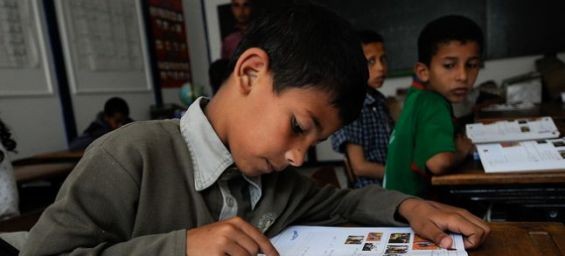Education is believed to be one of the main factors that could influence the global poverty rate. The idea is being initiated by the United Nations Educational, Scientific and Cultural Organization (UNESCO) in a recently published study. The organization highlights the fact that «the rate of global poverty could be split in two or more if all adults complete their secondary education».
The report is an element on which Unesco intends to build on the preparation of the United Nations High-Level Forum on Sustainable Development, which will be held from the 10th to the 19th of July at the UN Headquarters in New York. The meeting will aim to discuss the new Sustainable Development Agenda assigned with the task of eradicating Global poverty circa 2030.
For example, the UN agency document highlights the importance of «recognizing education as an essential means of action», the statement said. Based on the average effects of education on growth and poverty reduction in developing countries between 1965 and 2010, the study explains that «nearly 60 million people could escape poverty if all Adults spent two years more at school». In other words, if «all adults completed high school, 420 million people could emerge from poverty, reducing the number of poor globally and by more than half Two thirds in sub-Saharan Africa and South Asia».
However, these findings come as the Unesco Institute for Statistics (UIS) reports that «rates of non-enrollment remain high in many countries. It is therefore likely that the number of people who would carry on their studies will stay below the objective targeted by the UN organization». «No progress has been made in this direction, to the point where «264 million children, adolescents and young people are not enrolled in school by 2015», particularly in the Sub-Saharan region, which has one of the highest rates of poverty. Globally, 9% of children do not attend primary school. The same applies to 16% and 37%, respectively, for young people in lower and upper secondary education.
In Morocco, girls drop out of school
The Unesco also recalls that «education provides a set of skills that help increase job opportunities and consequently income, while at the same time it protects the population from socio-economic risks».
However, school dropouts remain one of the most common problems in the Kingdom : according to a survey published by the Huffington Post Morocco about national education, the drop-out rate in secondary schools has increased from 10.4% in 2011-2012 to 12.2% in 2014-2015.
A rate that shows a slight improvement in primary schools from 3.2% in 2011-12 to 2.9% in 2014-15, while drop-out levels among secondary school pupils have increased from 11 to 8,9% over the same period. As for students who have completed their studies, the decline is remarkable: between 2011-2012 and 2014-2015, this figure rose from 30% to 37.5%, all cycles combined. According to the same report, girls are particularly affected by this phenomenon: 12.2% of girls in secondary schools in 2014-15 dropped out of school.
Despite the slight improvement in the enrollment rate of children in Morocco, schools need a lot in order to be appreciated by pupils. Unesco calls «countries to improve the quality of education» but also «to reduce the direct and indirect costs of education for families». And for good reason, the UIS data confirms that «many households must always bear the children's school fees».





 chargement...
chargement...













